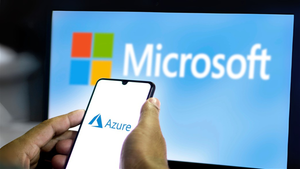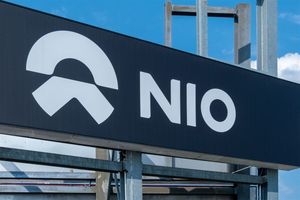 Could the rumors be true? Private equity firms are circling fitness company Peloton Interactive Inc. (NASDAQ: PTON) for a potential buyout. The company has seen 13 consecutive quarters of losses, and the once-shining stock is now 97% below its all-time high.
Could the rumors be true? Private equity firms are circling fitness company Peloton Interactive Inc. (NASDAQ: PTON) for a potential buyout. The company has seen 13 consecutive quarters of losses, and the once-shining stock is now 97% below its all-time high.
When the COVID-19 pandemic peaked in 2020-2021, lockdowns gave gym goers no choice but to work out at home. What better way to hop on that trend than to buy a brand-new Peloton bike with self-guided programs and an online community of fitness enthusiasts?
It turns out that this dream was short-lived, as sales plummeted and expectations came back down to reality. Now that the company holds toxic amounts of debt, and its former CEO said "no more" after yet another disappointing quarter, turnaround experts at undisclosed private equity firms could have a way to make Peloton great again.
It’s a “Simple” Two-Step Process
Peloton is looking to cut costs by as much as $200 million by 2025, which will come from the typical layoff strategy. Trimming the fat (through layoffs) will do nothing if there’s no meat underneath (profits), so some financial engineering will be needed this time.
Layoffs will help, but the actual root of the company’s financial problems lies in its debt structure. Carrying around $2.3 billion of debt on its balance sheet, Peloton’s liabilities exceed its current market capitalization of only $1.5 billion. Of course, in a high interest rate environment, this debt adds unnecessarily high interest expenses for the company.
Investors can have one of Buffett’s famous "cigar butts" here, as the company’s equity could be bought out at a significant premium when taken private for restructuring.
The world of buyouts works as follows: Private equity companies will buy a stock today for around the price they expect to be worth five years from now, at a reasonable discount for their troubles. What this price is and what that discount represents is the answer every investor is looking for.
Hidden Golden Nugget: Free Cash Flow
According to the company’s financials, the first quarter 2024 results show a shocking figure. Despite a narrowing net loss of $167.3 million, Peloton generated $8.6 million in free cash flow (operating cash flow minus capital expenditures).
Driven by better inventory management and the initial stages of these cost cuts, investors can hang onto this figure to learn where private equity may start valuing Peloton. But before throwing themselves into high-finance weeds, investors can check public opinions first.
Wall Street analysts see a price target of $5.10 a share for Peloton, calling for a consensus 21.4% upside from where it trades today. Those at JPMorgan Chase & Co. are willing to bet against the consensus, pushing for a higher valuation of $7 a share, representing a 66.2% upside instead.
When making a deal to buy out a public company, private equity firms have to get through a wall of shareholder votes. Knowing the stock could be worth up to $7 today, these shareholders will likely reject any offer below this public valuation by one of Wall Street’s most respected banks. Management could delay these buyout talks until consumer discretionary stocks recover. As the Federal Reserve (the Fed) is looking to cut interest rates later this year, Peloton’s balance sheet could see a needed break on cheaper debt refinancing, making private equity efforts harder and more expensive.
Not the Only Sharks on The Block
Peloton’s distant competitor, Lululemon Athletica Inc. (NASDAQ: LULU), carries enough cash on its balance sheet ($2.2 billion as of the last quarter) to buy out Peloton in today’s valuation, so private equity has all the more incentive to make an attractive offer.
Considering that cost cuts could initially boost free cash flow further, these newly available funds could be used to pay down debt, not to mention invest in a better restructuring to increase the company’s valuation. Peloton’s largest shareholder, the Vanguard Group, will probably hold onto this thesis before considering any buyout offer. Over the past 12 months, Peloton saw up to $25 billion in institutional buying, with only $6 billion in selling, for a net $19 billion, or roughly 10x today’s company size.
According to CNBC reports, working alongside JPMorgan on a “refinancing strategy” is none other than Goldman Sachs. These banks wouldn’t give the company a chance if they didn’t believe this newfound free cash flow wouldn’t be enough to repay debts down the line. This puts more pressure on private equity to deliver what could be a triple-digit upside buyout offer for today’s shareholders.





